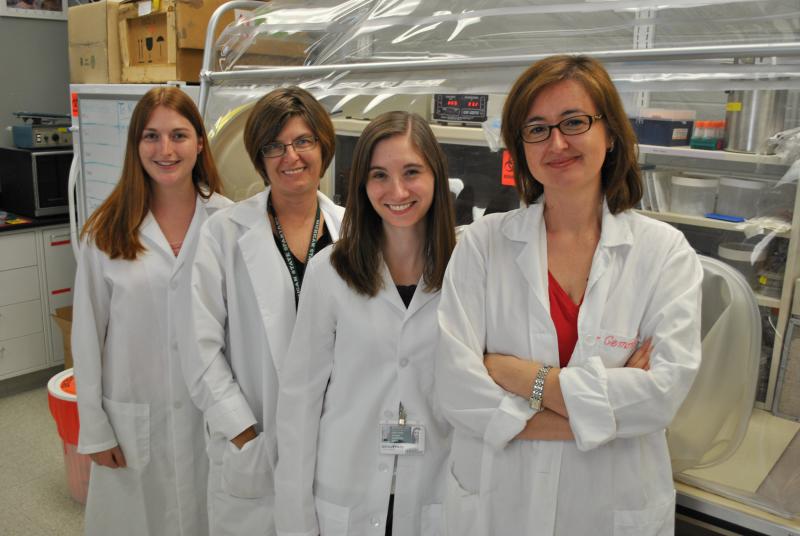Michigan State University - September 6, 2011
Homeland Security Newswire - September 7, 2011

MSU microbiologist Gemma Reguera (right) and her team of researchers have unraveled the mystery of how microbes generate electricity while cleaning up nuclear waste. Photo by Michael Steger.
EAST LANSING, Mich. — Researchers at Michigan State University have unraveled the mystery of how microbes generate electricity while cleaning up nuclear waste and other toxic metals.
Details of the process, which can be improved and patented, are published in the current issue of the Proceedings of the National Academy of Sciences. The implications could eventually benefit sites forever changed by nuclear contamination, said Gemma Reguera, MSU microbiologist.
“Geobacter bacteria are tiny micro-organisms that can play a major role in cleaning up polluted sites around the world,” said Reguera, who is an MSU AgBioResearch scientist. “Uranium contamination can be produced at any step in the production of nuclear fuel, and this process safely prevents its mobility and the hazard for exposure.”
Recent Comments